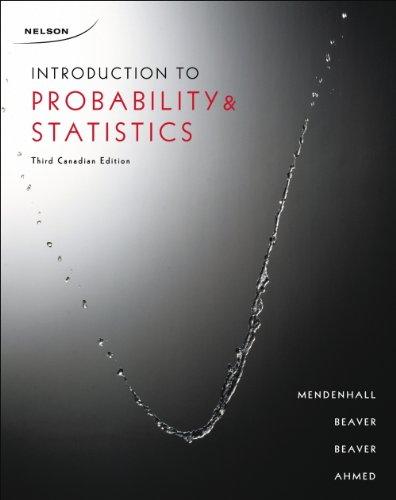Walking is perhaps the simplest exercise you can do anytime it fits in your busy sched- ule.
Question:
Walking is perhaps the simplest exercise you can do anytime it fits in your busy sched- ule. Further it can be viewed as one of the most economical methods of transportation. More importantly, walking reduces the risk of coronary disease. Walking speed varies quite a bit, depending on stride length, terrain or walking surface, and even one's own physical condition, age, and sex. On average, women walk at 4.8 kilometres per hour (km/h) on reasonably flat terrain. At this pace, the average woman should be able to easily carry on a conversation. For the average man, the speed is a little quicker, at 5.6 km/h, mainly due to his longer legs and thus longer stride length. Also, men typi- cally have more muscle mass, which increases speed because it is muscles which do the work to move the body. If you walk regularly (three times a week for 30 minutes or more), you will gradually increase your personal average speed because you will increase your cardiovascular endurance and you will build strength (or muscle) par- ticularly in your legs. Both of these factors will lead to walking faster. A digital pedometer will tell you your walking speed so you don't have to do the math! But you need to do statistics!
a. A random sample of 40 average Canadian women is selected and their walking distance for a one hour period is recorded. The mean and standard deviation are found to be 4.5 and 0.4 km/h, respectively. (i) Perform the appropriate test of hypothesis to determine whether the average walking speed is less than the stated average for women. Use a 0.01 level of significance. (ii) What effect, if any, would there be on the conclusion of the test of hypothesis in the first question if you changed a to 0.20? (ii) Find the p-value for this test in part (i). (iii) Describe the Type I and Type II errors for this testing problem. (iv) Compute the power of the test if the actual mean walking distance is 4.7 km/h. Interpret the results. (v) Is the assumption of normality required to perform the test in part (i) or to calculate the power in part (iv)? Explain.
b. Two independent samples of average Canadian men and women are taken and their walking speeds (km/h) are observed. The results of random sampling are recorded below.

(i) Perform the appropriate test of hypothesis to determine whether there is a sig- nificant difference in average walking speed (km/h) between Canadian men and women. Use the p-value approach and the critical value approach and explain your conclusion. (ii) Find a 99% lower confidence bound for the difference in the average walking speed (km/h) for the two groups. Does your confidence bound confirm your conclusions in the previous question? Explain. What additional information does the confidence bound give you?
Step by Step Answer:

Introduction To Probability And Statistics
ISBN: 9780176509804
3rd Edition
Authors: William Mendenhall






